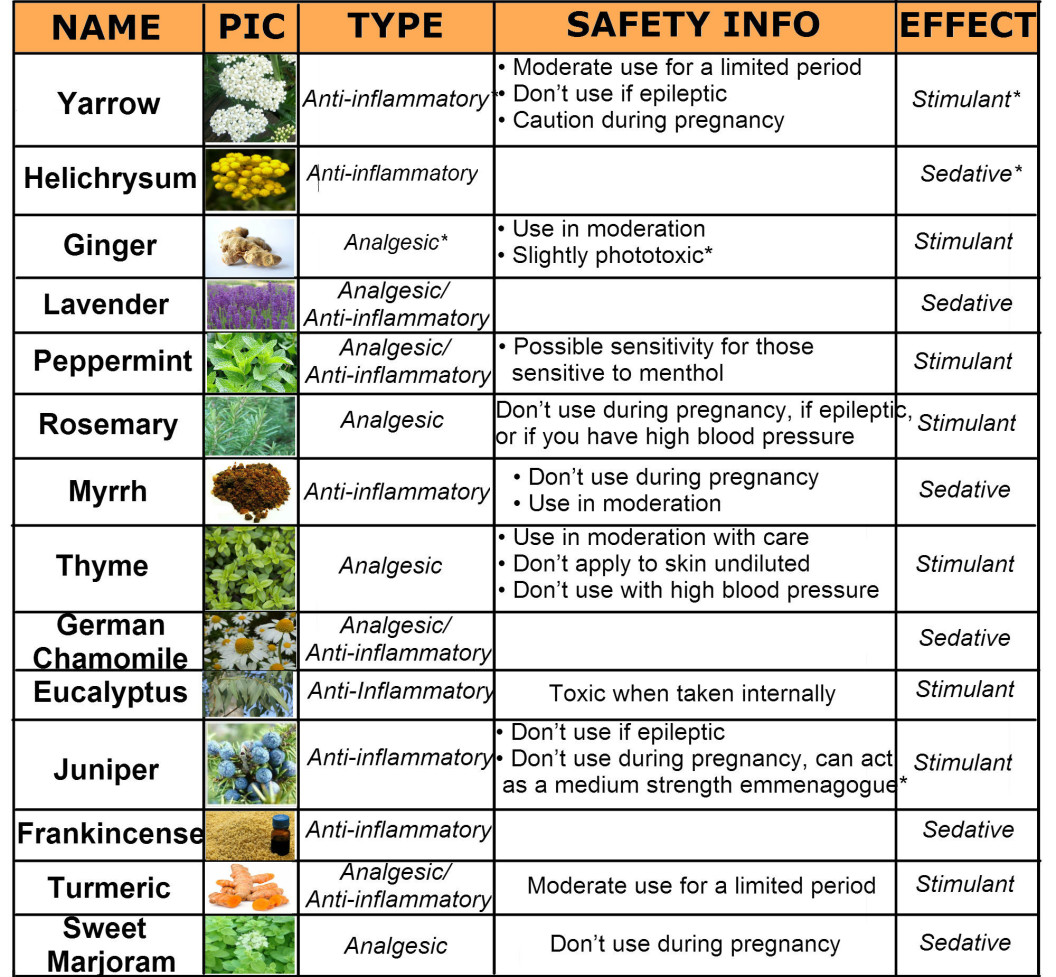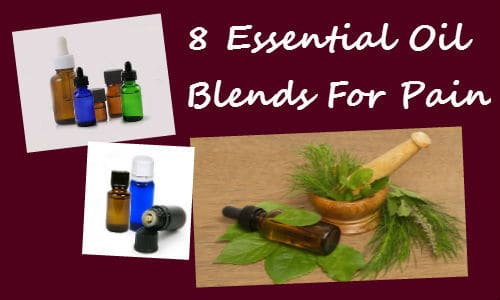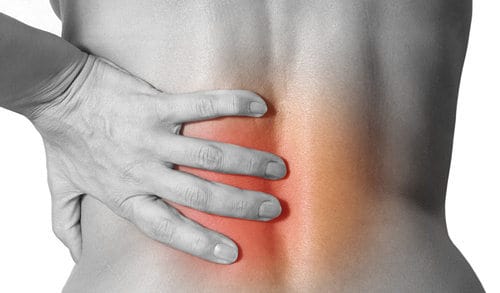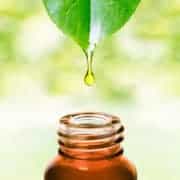Wonder How You Can Ease the Pain?
Essentially Good For You
Here’s a chart to help you understand essential oils that can be used for pain and inflammation. If you’re using essential oils or making oil blends, then it’s good to know what to use to maximize their benefits. This helps them go from something that’s just good to use, to something that’s useful to specifically you.
This chart is meant to help point you in the right direction when using the oils or making oil blends. It doesn’t include all of the details about the oils and their other benefits. We’ll go into that type of detail later. But it will allow you to see several things at once, so you don’t have to search all over the internet trying to gather all of the information.
Simply Put
This post will help you learn:
- The best oils to use for pain vs. inflammation
- The four oils that can be used for pain and inflammation
- Which oils are more effective for different pains and inflammation
- Safety tips for some of the oils, and when not to use them
- What the plant or herb looks like
- Which oils are calming or stimulating

What Does That Mean?
*Stimulant– It has an invigorating effect on the body or mind.
*Sedative– It has a calming effect.
*Analgesic– Alleviates pain.
*Anti-inflammatory– Alleviates inflammation.
*Emmenagogue– This is a substance that stimulates menstrual flow when there’s a delayed menstruation.
*Phototoxic– Sensitivity to sunlight or UV rays exposure. When phototoxic oil is applied on the skin and exposed to UV light, it can have mild to severe reactions.
Pain, Pain Go Away
Muscle pain and spasms/ sprains – lavender, thyme, helichrysum, sweet marjoram, eucalyptus, turmeric, peppermint, juniper, rosemary, german chamomile, ginger
Back pain – lavender, peppermint, rosemary, helichrysum, ginger, thyme, chamomile, juniper, eucalyptus
PMS pain – german chamomile, frankincense, myrrh, peppermint, yarrow, turmeric, sweet marjoram
Rheumatism – lavender, yarrow, sweet marjoram, german chamomile, juniper, helichrysum, ginger, thyme, rosemary, peppermint, eucalyptus
Headaches – lavender, sweet marjoram, german chamomile, frankincense, peppermint, eucalyptus, rosemary
Joint pain – lavender, helichrysum, sweet marjoram, yarrow, german chamomile, ginger, eucalyptus, turmeric, peppermint
Nerve pain – german chamomile, thyme, turmeric, helichrysum, yarrow
Arthritis pain – helichrysum, yarrow, german chamomile, frankincense, ginger, thyme, rosemary, turmeric, peppermint, juniper, lavender
Skin inflammations – sweet marjoram, german chamomile, juniper, helichrysum, myrrh
Until next time, enjoy your journey of healthy living through healthy choices.
Disclaimer
These statements are for informational purposes only and have not been evaluated by the Food and Drug Administration. This information and these products are not intended to diagnose, treat, cure or prevent any disease. If you are pregnant, nursing, taking medication, or have a medical condition, consult a physician before using these products.







